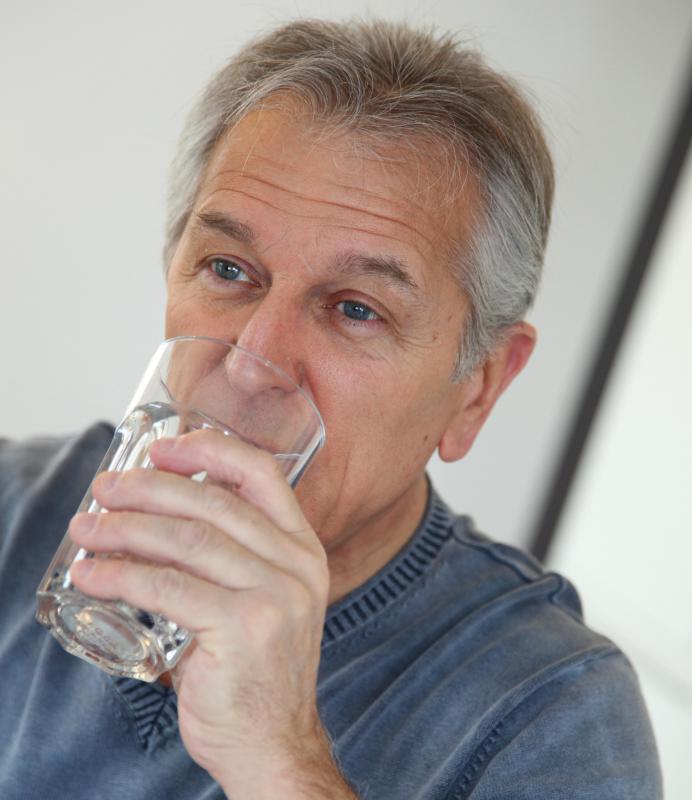At AllThingsNature, we're committed to delivering accurate, trustworthy information. Our expert-authored content is rigorously fact-checked and sourced from credible authorities. Discover how we uphold the highest standards in providing you with reliable knowledge.
What Is Aquatic Conservation?
Aquatic conservation is the practice of saving and protecting water resources, which not only include surface water such as lakes, rivers, and oceans, but underground water sources as well, such as aquifers. The purpose of such conservation is to fully preserve the biological diversity of an area, while also providing healthy drinking water for the human population. The aquatic conservation effort is enhanced and based on scientific research, which is used to identify problems, as well as possible solutions.
One of the key goals to conserving aquatic environments is simply to stop or prevent water pollution. While there will always be some impurities in water, there could be times when those impurities become detrimental to the organisms dependent on that water. This could lead to the death of certain organisms, and potentially set off a chain reaction that could impact the entire food chain.

The research should address many different and important issues. For example, scientific research could help identify what impurities are dangerous, and at what levels they become dangerous. It can also help determine if those impurities occur naturally or if they are somehow influenced by the actions of humans in the area. If humans are suspected to be the source of the pollution, it may identify possible sources of contamination specifically, such as a factory.

Often, aquatic conservation not only relies on scientific research, but also on regulation and enforcement actions to accomplish its goals. For example, companies found polluting ground or surface water supplies can be fined, or even shut down in the most serious cases. Such measures would not be possible if it were not for science and the legislative and executive branches of government working together for the common good.
Another key objective of aquatic conservation is to determine whether the use of aquatic resources are sustainable over the long term. This could include irrigation and drinking water, as well recreational water usage. In some cases, even recreational use of an aquatic environment could, ultimately, be harmful to it. Therefore, users must act responsibly and understand they are interacting with a sensitive environment.
Overall, aquatic conservation efforts rely on the support of the general public in order to succeed. If the public was unaware or ambivalent toward conservation efforts, then the program would likely fail. Therefore, education and outreach are other important aspects of water conservation, especially when the issues are complicated. Conservation professionals often spend a great deal of their time educating the public about the importance of such efforts.
Frequently Asked Questions
What is aquatic conservation and why is it important?
Aquatic conservation is the practice of preserving and restoring freshwater and marine ecosystems, including lakes, rivers, oceans, and wetlands. It's crucial because these ecosystems are vital for biodiversity, supporting millions of species, and for human life, providing water, food, and recreation. They also play a key role in regulating climate and are under threat from pollution, overfishing, and habitat destruction.
How does pollution affect aquatic ecosystems?
Pollution, including plastics, chemicals, and waste runoff, can devastate aquatic ecosystems by killing wildlife, disrupting food chains, and altering habitats. For instance, nutrient pollution from agricultural runoff can lead to harmful algal blooms that deplete oxygen in water, causing dead zones where aquatic life cannot survive, as seen in the Gulf of Mexico.
What are some effective methods of aquatic conservation?
Effective methods include establishing marine protected areas to safeguard habitats, implementing sustainable fishing practices to prevent overfishing, restoring wetlands to filter pollutants and provide wildlife habitat, and reducing plastic waste to prevent ocean pollution. Community engagement and education are also key to promoting conservation efforts and changing behaviors.
Can individual actions contribute to aquatic conservation?
Yes, individual actions can significantly contribute to aquatic conservation. Simple steps like reducing plastic use, properly disposing of chemicals, supporting sustainable seafood choices, and participating in local clean-up efforts can collectively make a big difference. Additionally, advocating for environmental policies and supporting conservation organizations amplify individual impact.
What role do governments play in aquatic conservation?
Governmental bodies are pivotal in aquatic conservation, enacting legislation to regulate pollution, manage fisheries, and protect endangered species. They can also fund scientific research and conservation projects, and collaborate internationally on issues like ocean acidification and climate change, which require a global response. Policy decisions at the government level can lead to large-scale environmental improvements.
How does climate change impact aquatic ecosystems?
Climate change poses a severe threat to aquatic ecosystems through rising sea levels, ocean acidification, and increased temperatures. These changes can lead to coral bleaching, altered migration patterns, and loss of breeding grounds for marine life. According to the Intergovernmental Panel on Climate Change, ocean temperatures have been rising, which affects species distribution and ecosystem dynamics.
AS FEATURED ON:
AS FEATURED ON:












Discuss this Article
Post your comments